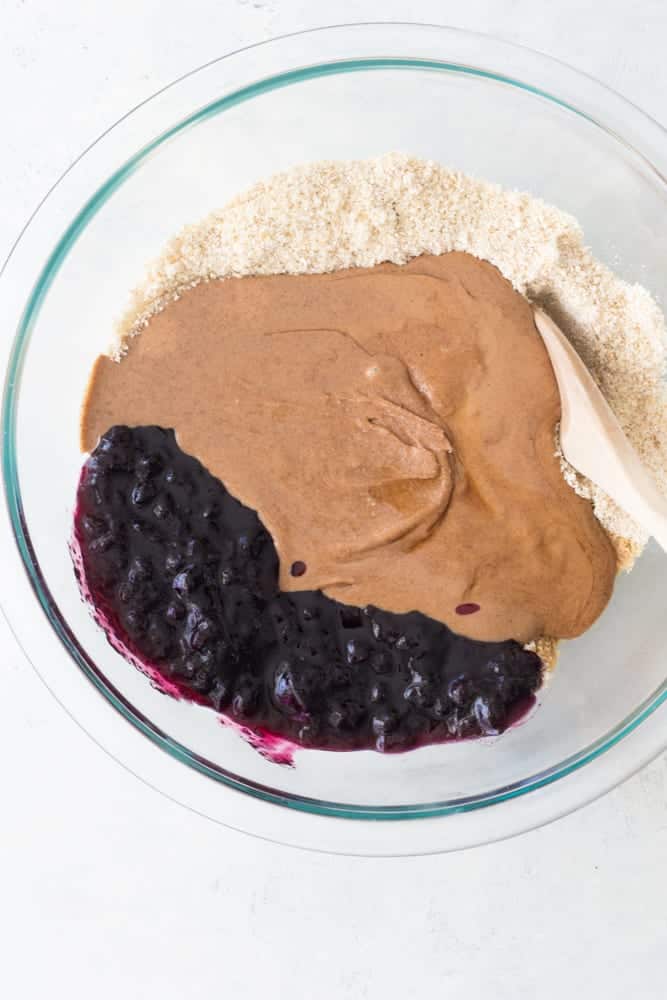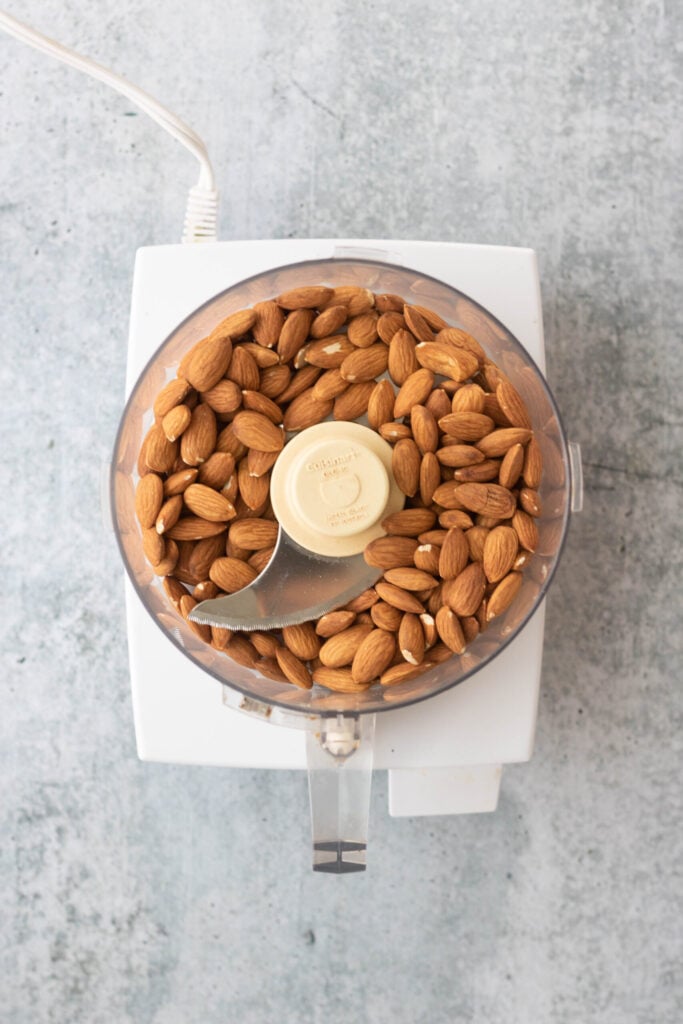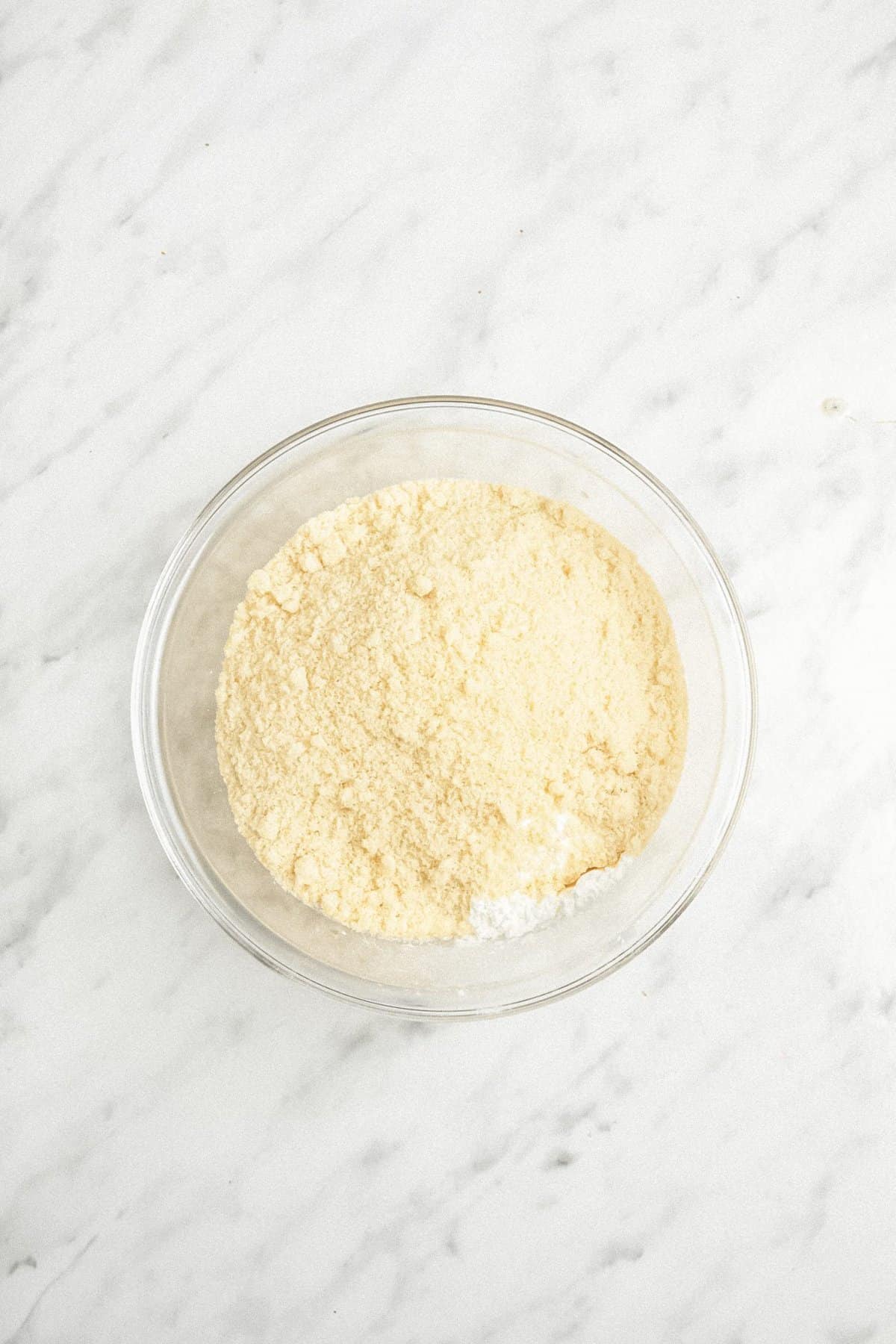Almonds are a delicious and versatile "nut" packed with nutritional benefits. To many they are simply thought of as a healthy and easily portable snack. But given the seemingly infinite number of ways almonds can be incorporated into dishes, it is no surprise that they are a staple in vegan cooking.

Almonds offer plant-based protein and are low in carbohydrates. They are also a good source of fiber, healthy fats, vitamin E, copper, magnesium, manganese, riboflavin and phosphorus, while also providing iron, calcium and zinc.
In this post, I'll cover in depth nutrition information about almonds, their health benefits, their versatility (in terms of almond milk, almond butter, almond flour, almond meal and almond pulp), soaked almonds, how to store them as well as provide my favorite vegan recipes featuring almonds.
Table of Contents
- What are almonds?
- Nutrition facts of almonds
- Health benefits of almonds
- The versatility of almonds
- Soaked almonds
- How to store almonds
- Vegan recipes featuring almonds
What are almonds?
Almonds are commonly referred to as a nut, but did you know that technically they are a seed?
Almonds come from almond trees native to the Middle East but the majority of almonds produced worldwide now takes place in the United States. In fact, California currently accounts for roughly 80% of worldwide almond production!
The almond tree grows drupes, which are a type of fruit. The drupe's outer covering is called a hull, which is a fleshy skin similar to that of a peach. Inside the hull is a hard shell, and inside the hard shell is the actual almond seed that we call a nut. Seems like a lot of work!

Nutrition facts of almonds
A single serving of raw, unsalted almonds is 1 ounce (28.35 grams), which is roughly 23 nuts. According to the USDA, one serving of almonds provides 48.4% of the recommended daily value (DV) for Vitamin E, 32.4% of the DV for copper, 26.9% of the DV for manganese, 18.2% of the DV for magnesium, 24.9% of the DV for riboflavin and 10.9% of the DV for phosphorus. Here is the full nutritional breakdown of raw almonds from the USDA:
- Calories: 164
- Total Fat: 14.1g
- Monounsaturated: 9g
- Saturated: 1.1g
- Cholesterol: 0mg
- Sodium: 0.28mg
- Total Carbohydrates: 6.1g
- Dietary Fiber: 3.5g
- Total Sugars: 1.2g
- Protein: 6g
- Iron: 1.1mg (5.8%)
- Calcium: 76.3mg (5.9%)
- Zinc: 0.9mg (8.1%)
- Copper: 0.3mg (32.4%)
- Magnesium: 76.5mg (18.2%)
- Manganese: 0.6mg (26.9%)
- Vitamin E: 7.3mg (48.4%)
- Phosphorus: 136mg (10.9%)
- Potassium: 208mg (4.4%)
- Riboflavin (Vitamin B2): 0.3mg (24.9%)
It is important to note that these nutrition facts are for raw almonds. Many stores sell them dry-roasted or seasoned with other flavors which would alter the nutritional content.


Health benefits of almonds
The National Library of Medicine concluded that nuts as a whole (including tree nuts such as cashews) are nutrient rich foods with wide-ranging cardiovascular and metabolic benefits. Nut consumption has been found to contribute to a reduced risk of coronary heart disease, including sudden cardiac death, and also decreases total and LDL-cholesterol (source).
Given my background in public health, understanding the purpose and effects of each ingredient I use in my recipes is very important to me. Oftentimes people look only at the top of the nutrition label for things like fat content, cholesterol and protein but neglect to account for the vitamins and minerals. Almonds in particular are rich in many of these, each of which are essential!

Vitamin E
The main role of vitamin E is to act as an antioxidant to protect cells from free radical damage. It also enhances immune function and prevents clots from forming in heart arteries (source).
Almonds are among the foods with the highest vitamin E content. Vitamin E is also abundant in plant-based oils, sunflower seeds, peanuts, mangos, avocados and vegetables such as collard greens, spinach, pumpkins, red bell peppers and asparagus.
Copper
Copper is necessary for many important functions such as energy production, maintaining the nervous and immune systems and brain development (source). A deficiency in copper could cause issues such as anemia, bone fractures, an irregular heartbeat and thyroid problems (source).
Almonds are an excellent source of copper. Vegans can also get copper from cashews, shiitake mushrooms, sunflower seeds, leafy greens and even dark chocolate, so it is relatively easy to get the recommended amount of copper on a plant-based diet.
Manganese
Manganese is used to make energy and protect from cell damage, and also helps with strong bones, reproduction, blood clotting and a healthy immune system (source).
A single serving of almonds contains 26.9% of the DV for manganese. Manganese is also abundant in whole grains such as brown rice, oatmeal and whole wheat bread, other nuts, legumes and leafy vegetables (source).
Magnesium
Magnesium supports muscle and nerve function in addition to energy production, and chronically low levels can increase the risk of high blood pressure, heart disease, type 2 diabetes and osteoporosis. Magnesium is also a safe option for migraine prevention and can be an effective option for headaches including migraines, tension-type headaches and cluster headaches (source).
A single serving of almonds contains 18.2% of the DV for magnesium. Magnesium is also high in other plant-based foods such as pumpkin seeds, chia seeds, cashews, spinach, oats and black beans (source).






Riboflavin
Riboflavin, also known as vitamin B2, is essential for growth of cells, energy production and the breakdown of fats, steroids and medications. Most of it is used immediately and excess amounts are excreted in the urine (source).
The best sources of riboflavin are actually animal-based foods such as dairy milk, eggs, beef, pork, liver, chicken and salmon. As riboflavin is vital to our health, it is imperative that vegans find ways to consume it regularly.
Fortunately, a single serving of almonds contains about 25% of the recommended daily value. Vitamin B2 can also be found in kale, hemp seeds, mushrooms, spinach, flaxseed and fortified cereals.
Phosphorus
Phosphorus is a key element of bones, teeth and cell membranes, and also regulates the normal function of nerves and muscles (source). The foods richest in phosphorus are dairy, red meat, poultry, seafood, legumes and nuts. Therefore, it is important for vegans not to overlook legumes and nuts! Almonds contain about 11% of the DV per serving.
It is important to note that common plant-based staples such as seeds, legumes and whole grains contain phytates which actually reduce the amount of phosphorus the body absorbs. Cooking, sprouting and soaking help break down phytic acid so that phosphorus is more easily absorbed (source).
Fiber
Almonds have a high fiber content which is essential for gut health, helps promote proper digestion and promotes satiety by keeping you feeling full for longer. Fiber also helps slow down the absorption of carbohydrates, which is especially important for those with diabetes as it leads to a slower release of glucose into the bloodstream.
The soluble fiber found in almonds has been shown to reduce risk factors for heart disease including blood pressure and cholesterol levels.
Protein
Getting enough protein from food can sometimes be challenging for vegans, and almonds are an easy way to do it! It is widely understood that protein, which helps build and repair muscles, is an important part of a healthy diet. A single serving of almonds contains 6 grams of protein.
Almonds are a complementary protein source rather than a complete protein source because they are low in one of the nine essential amino acids (lysine). This really only matters if almonds are your only source of protein. However, pairing almonds with other plant-based sources of protein which are high in lysine such as quinoa or legumes (beans or lentils) creates a complete protein.
Healthy Fats
There are two main types of fats: saturated and unsaturated.
Saturated fats raise both HDL ("good") and LDL ("bad") cholesterol. High LDL levels increase the risk of heart disease and blood vessel disease (source).
Unsaturated fats can be monounsaturated or polyunsaturated, both of which are considered healthy. Both may lower bad cholesterol and raise good cholesterol (source).
Of the fat found in almonds, 95% is unsaturated (80% monounsaturated, 15% polyunsaturated) and only 5% is saturated (source). This is why almonds are praised as heart healthy food!
The versatility of almonds
Almonds can be used in countless ways. Eaten whole they make a great snack, but they can also be used to make almond milk, almond butter, almond flour, almond meal and even be used for cheeses, yogurts, sauces and even oil!



Almond milk
Almond milk is a wonderful plant-based substitute for dairy milk and is readily available in grocery stores. I use it in smoothies, cereal, granola, oatmeal, lattes, chia seed pudding, soups or anywhere else one would normally use regular milk.
Nothing beats homemade almond milk though, and it is incredibly simple to make! Homemade almond milk is creamy, naturally sweet, refreshing and has a perfectly mild flavor.
To make homemade almond milk, simply blend almonds and water together if you want it plain and unsweetened. Then strain it through a nut milk bag and you're done!
Or, if you are looking for some sweetness, blend it with a natural sweetener such as dates or maple syrup, a pinch of salt and a little vanilla extract. See my recipe for The Best Homemade Almond Milk (+ what to do with the leftover pulp) for measurements and step-by-step directions.
The nice thing about homemade almond milk is that you are in complete control of the ingredients so there are no additives, carrageenan, gums or preservatives. Plus, you can decide how sweet you would like it and how much vanilla flavor you want to add (some like none and some like a lot!).



Almond butter
Almond butter is similar to that of peanut butter, only made with almonds. It has a mild taste and a touch of sweetness. Almond butter is relatively easy to find in grocery stores, but many brands add sugar and other additives.
Fortunately, pure almond butter can easily be made at home and it couldn't be any easier! Simply add raw almonds to a food processor and let it run. After about 10 minutes, check on it to scrape down the sides as needed and then let it run for another 7 minutes. See my recipe for Homemade Raw Creamy Almond Butter for more details.




Almond flour and almond meal - what's the difference?
Almond flour and almond meal are often used interchangeably, but there is definitely a difference! Almond flour is made from blanched (skin removed) almonds, whereas almond meal is made from raw almonds with the skin on them. Both are great gluten-free substitutes to traditional flours.
Almond flour is finer and has a cleaner consistency than almond meal. Given the skin is removed, almond flour also has a milder taste, a lighter texture and not as much of an almond flavor. Therefore, almond flour is better for baked goods such as cookies, muffins and pancakes.
Almond meal is coarser than almond flour and also has a stronger taste. It can still be used in baked goods but the outcome will be a little more dense and more almond-flavored. Therefore, many prefer to use almond meal for crackers or as a coating similar to breadcrumbs.
Almond pulp
Almond pulp is the solid portion leftover after squeezing all the almond milk out of a nut milk bag. It is somewhat wet but mostly gritty in texture.


Many people use almond pulp in baked goods or to make crackers, but it can also be blended into smoothies or even hummus to add healthy fats, fiber and plant-based protein.


See my recipes for Almond Pulp Strawberry Almond Smoothie and Easy Almond Pulp Hummus. You won't be disappointed!
Soaked almonds (also known as activated almonds)
Unlike cashews, it is not necessary to soak almonds for most vegan recipes. However, many people prefer the softer texture and milder taste it provides. Soaked almonds are simply raw almonds that have been soaked overnight, or for about 8-12 hours.
In addition to altering the taste and texture, a primary benefit of soaking almonds is that it causes the almonds to sprout, which in turn breaks down the phytic acid and helps with nutrient absorption.
How to store almonds
While most people store almonds in their pantry, almonds should actually be stored in the refrigerator or freezer. It is fine to keep them in the pantry if you plan to eat them within a few weeks, but over time they may get stale and even spoil.
When stored in an airtight container in the fridge or freezer, almonds have a shelf life of about two years.






Vegan recipes featuring almonds
Almonds are the star in so many vegan recipes. I easily could go an entire day from breakfast to an evening dessert with almonds in some form! Here are some of my favorites (all recipes are vegan, refined sugar-free and gluten-free):
- Breakfast:
- Smoothies:
- Lunch:
- Snacks:
- Main Dishes:
- Desserts:
- Dark Chocolate Chunk Almond Flour Cookies with Flaked Sea Salt
- Vegan Almond Butter Cups
- No-Bake Almond Butter Crunch Bars
- Chocolate Coated Almond Butter Crunch Balls
- Sweet Potato Brownies with Almond Butter Swirl
- Almond Butter Chocolate Chip Cookies
- No-Bake Almond Butter Brown Rice Crispy Treats
- Lemon Bars
- Protein-Packed Chocolate Chip Cookie Bars
Please comment below with your favorite way to incorporate almonds into your diet, and tag @eatingbyelaine on Instagram so I can see your final shots of any of these recipes you make!

Leave a Reply